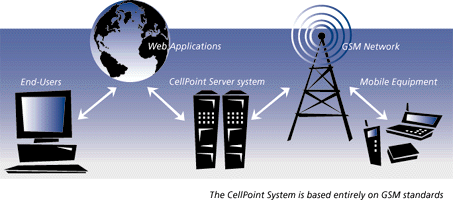NEW YORK (CNNfn) - Imagine you're at a bus stop, waiting and waiting for a ride that never comes. Fund manager Nigel Dutson says it won't be long before you'll be able to push a button on your cell phone and find out exactly when the bus will pick you up.
Dutson, of the Guinness Flight Wireless World Fund, is looking for cutting-edge stocks that are building a world reminiscent of a "Star Trek" episode.
"Let's say you're in Los Angeles and you want to find a restaurant," Dutson said. "You type in 'nearest restaurant' and it gives you a map online, a menu, and the number if you want a reservation."
Also in this column: A look at the high-yield sector from MFS Funds manager Bernie Scozzafava.
The fund launched Feb. 28 and has about $24 million in assets. It is up 2 percent in that time, he said.
"The real utility we see in the wireless world is the whole mobility issue," said Dutson, who is based in London. "It's going to be a massive area. There are going to be enormous technological shifts."
For example, one holding, Cellpoint, writes software for mobile phone operators that gives "applications on the move," Dutson said. That means if you're waiting at the bus stop you can dial up information. Businesses can also benefit because it means employees will always be able to tap into networks and other crucial information.
"If people who work for you can keep adding value to you when they're away from their desks, it oils the wheels and increases productivity," Dutson said. "If you're in the trucking business, you can find out where your trucks are, how long they stopped for lunch, and what routes they took."

Graphic from Cellpoint Web site.
Among established companies, the fund owns mobile operators like Bell Atlantic (BEL: Research, Estimates) and Vodafone AirTouch (VOD: Research, Estimates), and hardware companies like Nokia (NOK: Research, Estimates) and Ericsson (ERICY: Research, Estimates).
But the fund is also concentrating on smaller companies that are developing innovative technology for the future. For example, Dutson likes Belgian company Lernout & Hauspie (LHSP: Research, Estimates), a maker of speech recognition technology. It will mean your cell phone will look more like a palm pilot - and when you need to call your wife all you need to say is, "call home."
Another small favorite is Amdocs Ltd. (DOX: Research, Estimates), an Israeli company that is writing billing software for the mobile phone operators. It allows a mobile operator to set different fees for calling and more intensive uses like downloading a form from the Internet.
While the market has been volatile, Dutson sees an advantage for a cutting-edge fund.
"It is an early stage area," Dutson said. "Which makes it fantastically exciting and fantastically unstable. In areas that change this quickly, it doesn't pay for you to buy today's winners and sit for five years."
With interest rates heading up, you might be wondering what the situation is for high-yield bond funds. Bernie Scozzafava, senior vice president and portfolio manager at MFS mutual funds, said the outlook is good despite two lackluster years.
High-yield bonds, also known as "junk bonds," are issued by companies deemed below investment grade by the credit rating agencies. The risk level can be mild to speculative. The greater the risk, the higher the yield, or return.
"It's hard to be optimistic after the last two years, but I'm pretty optimistic," he said.
In 1998, the Asia crisis threw cold water on the sector, and investors chose to put their money in high-quality Treasury bonds.
And in 1999, rising interest rates hurt demand, and the default rate doubled. While defaults are usually about 2 percent a year, the figure was 4.2 percent in 1999 because of problems in the oil, health-care and satellite industries. Oil prices sank, the health-care business got hurt by Medicare reform, and satellite companies like Iridium went bankrupt.
But this year, oil prices are at record highs, and the health-care and satellite sectors have put their problems behind them.
Scozzafava said high-yield bond funds are getting an unusual opportunity to invest in top-grade telecom companies
"We've never had a chance to invest in industry telecom leaders," Scozzafava said. Many of the telecoms, like Nextlink, developed their fiber-optic networks with high-yield bonds.
MFS high-yield funds have done better than peers because they overweighted telecoms like Nextlink and Esat and stayed clear of the oil, health-care and satellite sectors, he said.
MFS High-Income Fund, with $1.4 billion in assets, is up 1.72 percent year to date as of Thursday and is in the top 13 percent of its category, according to Morningstar.
MFS High-Yield Opportunities Fund, which also invests in emerging markets debt, is up 5.7 percent in the same time, making it the third-best performer in the category.
The advantage of having some high-yield bond exposure in your portfolio is it provides diversification and strong returns with about half of the volatility of the S&P 500, he said. While it might be different for some people, you can own 10 percent of your portfolio in high-yield, he said. 
-- Click here to send email to Martine Costello
|

